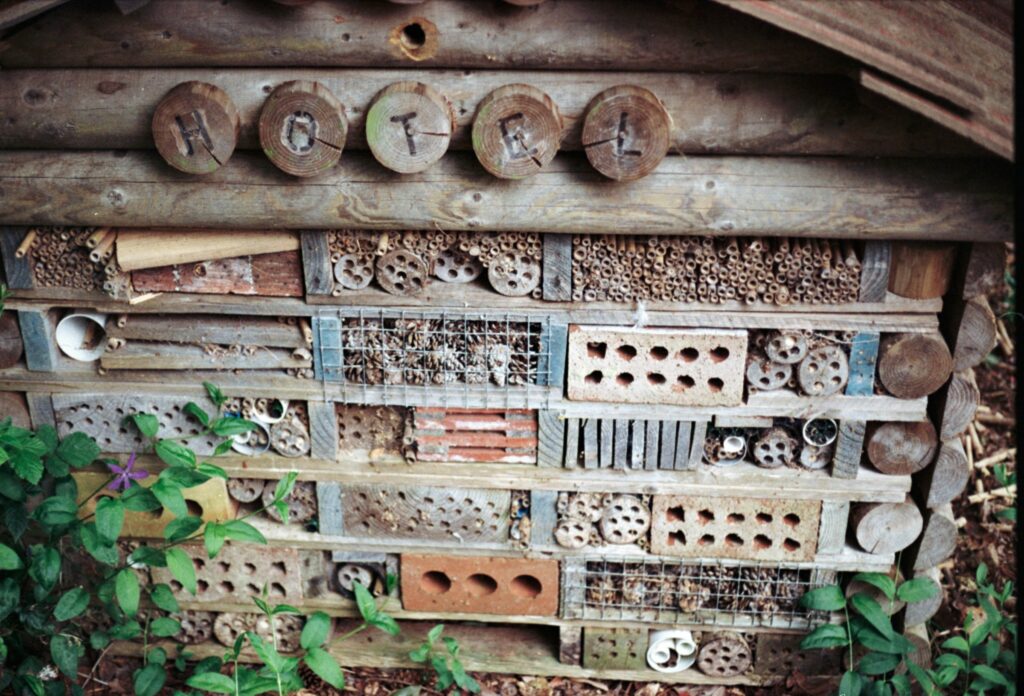Imagine having a little eco-resort in your backyard, built just for the beneficial bugs that help your garden thrive.
That’s what a bug hotel is — a handmade structure that provides shelter, nesting sites, and safe hiding spots for pollinators, pest controllers, and decomposers. Think bees, ladybugs, lacewings, and even tiny frogs or geckos that call your garden home.
In this HARVEST guide, we’ll show you why a bug hotel is great for Malaysian gardens, what to use, and exactly how to build one with mostly free, recycled materials.
🌿 Why Make a Bug Hotel in Malaysia?
✅ Boost Pollination: Invite native bees and other pollinators to help your garden fruit and flower.
✅ Pest Control: Attract ladybugs, lacewings, and hoverflies — natural enemies of aphids and other pests.
✅ Support Biodiversity: Provide a mini sanctuary for wildlife in urban or suburban gardens.
✅ Fun DIY for Kids: Great educational project that teaches about ecosystems and sustainability.
🏠 What Goes Into a Bug Hotel?
A bug hotel is basically a structure filled with natural materials that create small spaces for different creatures. Common materials include:
🌱 Bamboo sticks (hollow)
🌱 Twigs and small branches
🌱 Pine cones or coconut husks
🌱 Dry leaves
🌱 Pieces of bark
🌱 Clay bits
🌱 Bricks with holes
🌱 Recycled wood or pallets
💡 Tip: Make sure materials are clean and pesticide-free.
🛠️ How to Make a Bug Hotel (Step-by-Step Malaysia Style)
1️⃣ Choose a Location
- Place in a quiet, shady spot (near a fence, under a tree, or next to a wall).
- Make sure it’s sheltered from heavy rain but still gets some morning sun.
2️⃣ Build the Frame
- Use an old wooden crate, shoebox (with plastic cover removed), or stack of bricks.
- Or, create a simple frame with scrap wood or bamboo tied together.
Size?
Your bug hotel can be as small as a shoebox or as big as a cupboard!
3️⃣ Fill With Natural Materials
Layer different sections with:
- Bamboo canes / hollow sticks (solitary bees love these)
- Twigs and dry leaves (for beetles and small frogs)
- Coconut husk or pine cones (perfect hiding spots)
- Clay chips or pots on their side (good for spiders or geckos)
Pack tightly so materials won’t fall out.
4️⃣ Add Finishing Touches
- Roof the top with a recycled tile or small board to protect from rain.
- Decorate with non-toxic paint or signs (let kids join in!).
🛡️ Maintenance Tips
✅ Check every few months — replace decayed materials as needed.
✅ Avoid moving the hotel too often — bugs need time to settle.
✅ No pesticides nearby! Let nature do the work.
🐝 Who Will Stay in Your Bug Hotel?
| Guest | What They Do |
|---|---|
| Native solitary bees | Pollinate your flowers & veggies |
| Ladybugs | Eat aphids & soft-bodied pests |
| Lacewings | Control pests like whiteflies |
| Spiders | Natural pest control |
| Tiny frogs/geckos | Help with mosquito control |
| Decomposer beetles | Break down garden waste |
📸 Share Your Bug Hotel!
Build a bug hotel? Let’s see it! Tag @projectharvest.my and join Malaysia’s growing eco-garden community.
Use hashtags:#BugHotelMY #EcoGardenMalaysia #ProjectHarvestMY #PollinatorParadise
🌈 Final Thoughts: Small Hotel, Big Impact
A bug hotel is more than just a cool garden feature — it’s a way to give back to nature, support your garden’s health, and teach the next generation about biodiversity.
So why not build one this weekend? Your garden — and the bugs — will thank you 🐞🌿

